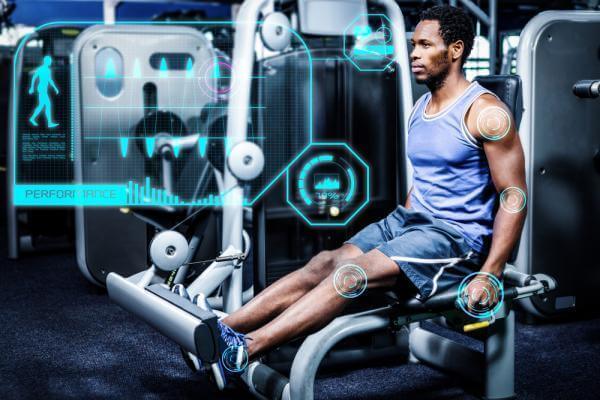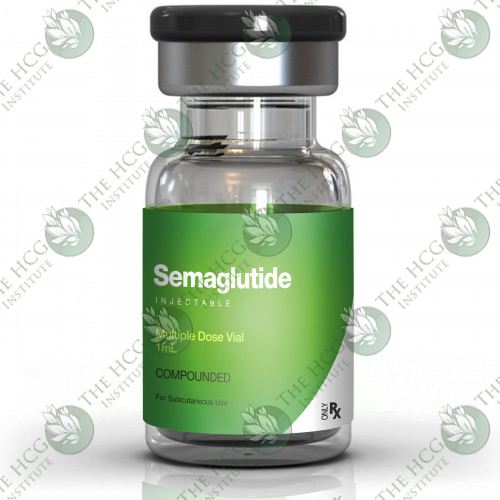
Lucie Greene, Director of JWT Innovation reveals how health trends and innovation are moving at breakneck speed, powered by an engaged, sophisticated and curious global consumer. She outlines the 10 emerging health themes we are seeing for 2016.
As forecasters, JWT Innovation are watching the rapid metabolism of trends from food to beauty to tech as they move in a heartbeat from new, to nearly new, to over. The path of trends is also changing. Trends can spring from anywhere, from the streets of Cairo to the boutiques of South Korea, and achieve rapid global adoption.
What key emerging health themes are we seeing?
Wellbeing and future-proofing our bodies is also becoming nothing short of a global movement. As consumers, we’re investing in wearable tech, athleisure wear, wellness pursuits, mindfulness, buying farm-to-table, bean-to-bar, seed-to-skin, organic, fermented, probiotic, cold-pressed everything to ensure our continued good health. ‘Natural’ is becoming the watchword for all of this.
Consumers are exchanging previously trusted products and brands for new natural alternatives in multiple areas of their lives, from feminine care to fertility. Alongside this we’re seeing a rising appreciation for bacteria’no longer something to be cleaned away, but recognised as healthy and essential to our daily lives.
One thing that’s becoming clear across the board is that consumers are joining the dots in multiple areas of their consumption patterns and lifestyles. Food decisions are no longer simply based around service and price’they are made holistically, as food is assessed for its environmental impact, health benefits, the purity of its ingredients, and the creator brand’s treatment of livestock and employees. Health isn’t viewed in a silo either. Diet, beauty, wellbeing, mind and body, fitness: all are viewed by the consumer as one big ecosystem to maintain.
Brands, once judged on their desirability and products, are now being judged on their value systems, on whether they are innovators, on whether they are promising to change the world. Interestingly, this has become a talent retention issue, as companies instil value systems and culture to attract demanding millennials in a competitive job market. Across all sectors, consumers are differentiating between brands based on concern for the environment.
10 health trends for 2016
1. Stool banking
Every human body is home to a unique mixture of bacteria that help maintain health, a fact that has received increasing media coverage in the past year. But antibiotics and other treatments can disrupt this balance, with potential adverse effects. Conditions like the intestinal infection Clostridium difficile, which is sometimes fatal, often resist conventional medicines but respond well to ‘fecal transplantation’ that contains infusions of gut-friendly bacteria.
Consumers are now storing samples of their personal bacterial ecosystems in case they need them for treatment. ‘Should We Bank Our Own Stool?’ wondered a New York Times article in October 2015, offering some compelling arguments in favour of the procedure. The OpenBiome company offers personalized ‘microbial restoration services’ that include screening, profiling, processing, encapsulation and cryopreservation.
Why it’s interesting: When it comes to health, consumers are looking for natural solutions rather than techno-fixes, and disregarding cultural taboos as they search for the best fit.
2. Sound healing
In New York and Los Angeles, people are gathering for ‘sound baths,’ group experiences where participants focus on the vibrations of tuning forks and singing bowls. Young people, accustomed to constant stimulation, are sometimes intimidated by the total silence that is common in meditation, but find sound baths more approachable.
Wellness expert Debbie Attias recently began hosting sonic meditation sessions in Brooklyn’s Greenpoint neighbourhood. ‘I’m interested in sound healing through listening as well as through expressing and making sound,’ she says. ‘Both bring you fully and completely into the present moment, and when you are in tune, the world becomes synchronistic and your path is made clearer.’ Sound baths are popping up at Twisted Trunk Yoga and Studio Anya, both in Manhattan; at the Wythe Hotel, Maha Rose Center for Healing, and the Brooklyn Zen Center, all in Brooklyn; and at House of Intuition in the Silver Lake neighbourhood of Los Angeles.
Why it’s interesting: Stressed consumers are seeking novel forms of therapy, meditation and mindfulness practice to counteract always-on lifestyles.
3. Feminine care revolution
Tampons are getting a makeover, moving from unmentionable necessity to celebrated cool-girl staple. While mega-brands Tampax, Kotex and Playtex have long dominated the industry, direct-to-consumer newcomer Lola, founded by Dartmouth grads Jordana Kier and Alex Friedman, represents a new approach. Lola manufactures its own hypoallergenic cotton tampons, which are free of additives, synthetics, chemicals and dyes, and, unlike mainstream brands, contain no artificial fibres such as polyester and rayon. Lola is committed to transparency and convenience. Other features include minimalist branding and an intuitive subscription model with options for delivery customization.
New alternatives to traditional pads and tampons are also emerging. Looncup is a newly launched ‘smart’ menstrual cup that aims to ‘redefine menstruation”it communicates with an app to track and analyse menstrual patterns. The company’s Kickstarter campaign raised over three times its original goal of $50,000.
The politics of feminine care have also been in the news recently. Contentious tax regulations that designate feminine care products as a ‘luxury’ in the EU continues to cause debate.
Meanwhile, across the board women are starting to view feminine hygiene products with a critical eye. In response to consumer demands to know more about what is in their products, Procter & Gamble, maker of the popular Always and Tampax brands, and Kimberly-Clark, maker of U by Kotex, have posted details online and on packaging.
Why it’s interesting: Women are actively seeking alternatives to conventional tampons, and intelligent branding, sophisticated aesthetics and relatable language are among their considerations. This is all part of a wider cultural embrace of natural products and messaging, which we explore further in our New Natural trend report.
4. Healthonism
Health-conscious millennials are offsetting alcohol with antioxidants and healthy mixers, mashing up exercise with hedonism, and flocking to a growing number of exercise-drinking events. Earlier this year, London’s House of Voga, which combines yoga with the expressive vogueing dance style of the 80s, co-hosted a party with Mayfair nightclub Bonbonniere. Voga Bonbonniere began with a one-hour voga class before proceeding to drinks and dancing into the early hours. Fitness club Equinox’s London Kensington location hosts quarterly After Dark events for members and their guests, who are treated to a range of different yoga classes, guest instructors, DJ sets and cocktails courtesy of Mahiki.
The trend is also expressed in new beverage products, with nutritious cold-pressed juices becoming a popular vehicle for healthier cocktails. Cold-pressed, non-alcoholic juices by US brand CleanDrinking are all-natural, low-calorie cocktail mixers designed to ‘support a balanced lifestyle of mindful drinking.’ Flavors include Hotamelon Tequila Cleanse and RaspberryAddict Vodka Cleanse.
Why it’s interesting: Consumers are engaging in health and wellbeing in a contradictory, divergent, have-it-all way, putting healthy habits alongside fun.
5. Holographic healthcare
This year, Microsoft announced that it was developing a new augmented reality headset, HoloLens. Medical students at Case Western Reserve University are already using the product to learn about human anatomy with 3D holographic images of the inside of the human body. HoloLens is also able to generate surgery simulations and could prove a powerful teaching tool for the next generation of doctors.
The next stage in at-home digital personalized healthcare is also being enhanced by holograms. Dr Leslie Saxon, founder of the University of Southern California (USC) Center for Body Computing, demonstrated ‘hologram house calls’ at the USC Body Computing Conference in October. Hologram house calls allow doctors to visit patients anywhere in the world, at any time. ‘This is the moment to transform traditional health care,’ says Saxon. ‘We can provide patients around the globe with healthcare where there’s never been any. And we can provide patients with the type of data they need and the information they need to be in command of their healthcare story.’
Why it’s interesting: A step beyond telemedicine, holographic projection enhances long-distance interactions between patient and doctor, suggesting a more mobile and immersive future for healthcare.
6. Work wellness
Companies are competing for talent by offering increasingly innovative wellness packages. Italy’s Technogym has created an idealized blueprint for corporate health facilities at its Wellness Campus in Emilia Romagna, with a two-story gym, a running track, free classes, lengthy lunches, chairless meeting spaces and local foods. In addition to making exercise equipment, the company offers consulting services, and Google, Merrill Lynch and Michelle Obama have all expressed interest.
Why it’s interesting: Corporate wellness programs boost both morale and the bottom line. ‘Research from the World Economic Forum shows that $1 invested in corporate wellness leads to a $4 return in increased productivity,’ Technogym founder Nerio Alessandri told i-D magazine.
7. Molecular environment sensors
New devices are helping consumers monitor products and environments in new ways. The Scio pocket sensor, which raised over $2.7 million on Kickstarter and will begin shipping to backers in the coming months, is a handheld spectrometer that helps identify the chemical makeup of foods, plants or drugs, also taking measurements on nutritional values and freshness. The TZOA, another Kickstarter-funded device, which ships in spring 2016, is a portable environmental monitor that tracks PM10 and PM2.5 particles in the air, helping people avoid allergens and pollutants.
Why it’s interesting: These devices will empower consumers with even more information about their surroundings. Air quality monitors could also help consumers tailor their skincare regimens to prevailing conditions.
8. Superhuman supernutrition
Move over, diet shakes’Silicon Valley has created a new wave of supershakes for superhumans, stripping away the bother of cooking and giving consumers 100% optimal nutrition in a glass, all the better to fuel 24-hour hack-offs.
Silicon Valley company Soylent offers a liquid food product that provides maximum nutrition per serving with minimal effort. In January 2015, the company was valued at $100 million, according to Re/code. Other companies have not been slow to enter the field. KetoSoy founder Ted Tieken calls his product the ‘future food.’ KetoSoy launched December 2014 and made well over $100,000 in sales in its first six months, according to Forbes.
Why it’s interesting: Fast food consumption just got faster and comes in liquid form. In our cash-strapped, time-poor society, consumers are looking for economically viable solutions to gain maximum nutrition with minimal effort.
9. Fitness: ‘It ain’t about the ass’
Millennial feminist icon Lena Dunham, architect of hit series Girls and newly launched women’s media platform Lenny, recently espoused the benefits of her regular trips to New York’s Tracy Anderson Method studio. The objective was not weight loss, she said, but alleviating anxiety. ‘To those struggling with anxiety, OCD, depression: I know it’s mad annoying when people tell you to exercise, and it took me about 16 medicated years to listen. I’m glad I did. It ain’t about the ass, it’s about the brain.’
Why it’s interesting: Consumers are taking a holistic approach to mind, body, diet and fitness, recognizing them as interconnected. We’ve already seen a shift in the language of exercise, which has moved from talking about being thin to talking about being fit, and now influencers are also championing mental strength as a further benefit.
10. Food mysteries revealed
Growing unease about food additives is manifesting in new visual treatments that show what’s really in our food. The Violating Velveeta project by New York designers John Pate Hamilton and Josef Abboud separates the cheese product’s ingredients into blister packs. The result renders a familiar product into a strangely clinical form, but perhaps more honestly reflects its composition. The book Ingredients by Dwight Eschliman and Steve Ettlinger, published in September 2015, deconstructs well-known products like Twinkies, Doritos and ketchup into powdery mounds worthy of a mad scientist. ‘If food ingredient labels make your eyes glaze over, we hope that this book will open them again,’ Ettlinger writes.
Why it’s interesting: As consumers learn what’s in their food, they’re not liking what they see. Brands have to be transparent about ingredients to win their trust.
Lucie Greene, Director of JWT Innovation
Further details on the report can be found here: www.jwtintelligence.com/2015/11/7305/



















